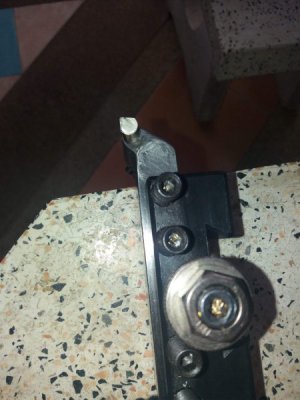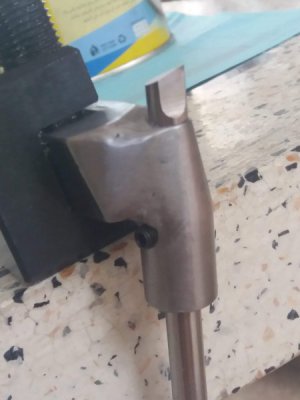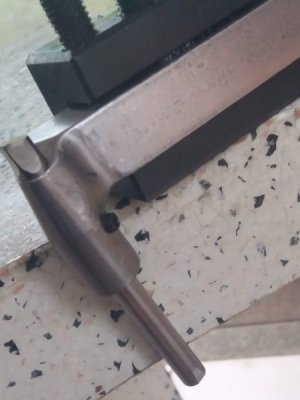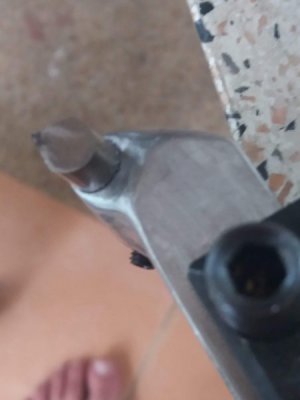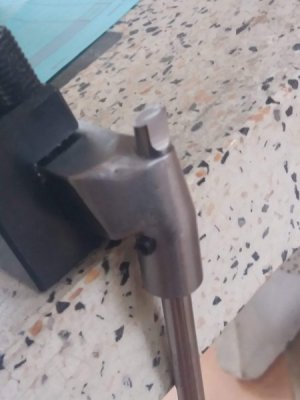- Joined
- Dec 20, 2012
- Messages
- 9,422
I emailed Gary who is the owner of Eccentric Engineering asking him if he could address some of the questions, following is his response.
In truth, $100.00 to buy and ship a tool holder plus the grinding jig is not an outrageous cost nowadays. I don't think he makes a ton of money on this item after paying overhead so I think the cost is more than fair. This is especially true if you cannot or will not grind your own tools. For me, that is not the case.
Different tool geometry for different materials was developed many years ago for industry so that they could remove the largest possible amount of material in the shortest possible amount of time for the longest possible tool life but still achieve an acceptable surface quality. The four factors were balanced to achieve the best result in terms of making money, that’s all they were developed for, if you increase one you decrease another and vice versa.
This thinking isn’t as relevant in a home workshop as fractions of a second in reduced machining time really don’t matter to us.
The cutting angles on a turning tool found in most tool angle tables were developed over many years, from many sources in the industry. What they found was that different materials require different tool angles to cut them efficiently, which essentially means the ability to produce the maximum number of parts per unit time. There are many components to this efficiency thing - tool life, machine life, energy expenditure, and on and on - but the point is that to maximize efficiency, geometry changes with the material group.
I dunno', time matters to me. Let me explain. If I take a tool with standard geometry for steel and throw it on my little Sherline lathe, I can maybe take a 0.020" cut in mild steel. But if I use a tool with a modified geometry, I can take double or triple that cut in the same amount of time while also improving accuracy and finish. In this case, time equates to performance and efficiency, no? That same modified tool will do this for mild steel but will it work as well in stainless? No, it wouldn't be as effective, but I can change the geometry easily so that it would. My point is that, for me, the ability to alter geometry is important to the performance of the lathe on which the tool is used. A fixed geometry would totally negate this.
So long as a tool bit has some clearance angles it will cut, changing the rake angle will help or hinder how fast the tool bit can cut through the material but it’s the keenness of the cutting edge combined with the speeds and feeds of the lathe that affects the surface finish.
The rake angles on a HSS tool are, in my view, the most important angles on the tool. As suggested above, they impact on penetration (how fast the tool bit can cut) but they also affect cutting temperatures via chip clearance, chip thickness and flow velocity. It also impacts on the site of focus of cutting forces and aids in finishes by altering the shear angle at the end cutting edge. All of this matters, at least to me, but perhaps most important of these things is cutting force reduction/penetration. If the aforementioned standard geometry cutting tool for mild steel has a side rake angle of 8 degrees, we can improve performance by increasing that rake angle to 12 or 15 degrees and the tool will cut deeper on the same lathe. If we take this same modified tool and use it on aluminum, we can make the tool work even better by giving it 18 degrees of side rake. At the same time, we could change the back rake angle to make the tool cut even better while improving finishes. Again, my point is that the rake angles matter, as does the ability to change them at need.
So, here is the bottom line for me. I have said from the beginning that I think the Diamond Tool Holder is a good way to go for guys who don't wish to or are unable to grind tools. Nothing we've discussed about it has changed that view. I think I understand tool geometry well enough that going to a fixed geometry will not work for me, that's all.

